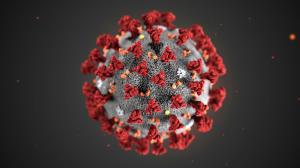The Great Andamanese (GA) tribe, an aboriginal group that lives on the Great Andaman archipelago in the Bay of Bengal, is just a population of 59. On August 27, Indian health officials confirmed nine COVID-19 cases among the community, four of which were found in the Strait Island.
The GA predominantly reside in the remote Strait Island, which is a part of Andaman and Nicobar archipelago, a Union Territory of India.
Videos by VICE
The cases have sparked massive concerns over what this means for the larger indigenous communities in the cluster of islands that are either endangered or on the verge of extinction. Some reports sounded alarm over the possibility of the pandemic wiping out some of these tribes.
Sita Venkateswar, an anthropologist at Massey University in New Zealand, who has studied indigenous tribes of Sentinel Island and Great Nicobar, told VICE News that the infections among the GA in Port Blair possibly came because the city has cases. Unlike the indigenous communities Jarawas and the Sentinelese in the region, the GA are not entirely disconnected. Some live in Port Blair, the capital city, and hold jobs.
The Sentinelese and the Jarawas have often been reported to be hostile to outside contact. In 2018, an American man, who illegally entered North Sentinel island, the home of the Sentinelese, was attacked with arrows by the tribespeople. The man died.
“Even a few mortalities [resulting from COVID-19] will have major consequences on these communities,” said Venkateswar, who has been advocating that the indigenous tribes of the Union Territory be left alone by outsiders.
Venkateswar said that while their small population is a worry, it’s also the fact that many members of the community suffer from co-morbidities.
Madhumala Chattopadhyay, an anthropologist who was reportedly the first female anthropologist to come in contact with the Sentinelese, reiterated the many vulnerabilities that the tribes have developed over time such as anaemia.
Dr Avijit Roy, joint secretary of health of the Andaman and Nicobar Islands, and the nodal officer for COVID-19 response, told The Indian Express that out of the total 59 GA, 34 live in Strait Island and 24 in Port Blair. Five GA from Port Blair tested positive.
The samples of the Strait Island cases were taken on August 22 and the report came the next day. The patients were then sent to isolation wards at GB Pant Hospital in Port Blair.
The Andamans and Nicobar Islands are estimated to have a population of approximately 380,000 people. There are currently 3,018 confirmed COVID-19 cases in the Islands, of which 602 are active. There have been 42 deaths.
Health officials, in the meantime, did not clarify how the infection reached the Strait Islands, and whether the authorities were in touch with the vulnerable tribes from the beginning for COVID-19 management and awareness. VICE News reached out to Roy to answer these queries, but he declined our interview request.
“Everything [is] under control, nothing to worry,” Roy responded via text.
The GA are one of the five Particularly Vulnerable Tribal Groups (PVTG), as classified by the Indian government. The others in the category include Onges (population of around 100), Jarawa (population of over 400), Sentinelese (ranging from 50 to 200) and Shompens (estimated around 200-300 members).
On August 28, news outlet The Print reported that officials monitoring the Jarawa and Sentinelese communities tested positive for COVID-19 over the last two weeks. These officials, who work with the Andaman Adim Janjati Vikas Samiti (a department under the Union Territory’s administration), are reported to have been regularly visiting, patrolling and interacting with the locals for COVID-19 awareness.
After the officials were tested positive, the administration has since decided to conduct random testing of the Jarawas, reported The Print.
A BBC report stated that the 476-odd Jarawas were moved and isolated to the farthest part of the jungle after the outbreak in the region. Officials said that it was done to minimise contact between the tribes and those travelling through the forest for essentials and emergency work.
The Print reported that samples from the Onge tribe have already been taken, all of whom tested negative.
On August 27, Chetan Sanghi, the Chief Secretary of the Andaman and Nicobar Islands, tweeted that the “primitive vulnerable tribes” are safe, and that precautions are being taken to protect them. “Rumours cause more damage than the pandemic,” he added.
In the 1850s, the GA were numbered between 5,000 and 8,000. But when the British colonisers set up prisoners’ colonies in the region, the community contracted diseases such as syphilis, gonorrhoea, flu and others. Even now, the isolated communities are known to have very little resistance to the world’s common pathogens.
“I wonder if there will be more investigation on how the infection came,” said Venkateswar. “If the infection has reached the people in Strait Island, it could spread like wildfire.”
News reports stated that a special community health officer will be reaching the island to keep an eye on the tribe along with the rest of the PVTGs.
The Indian government provides houses and monthly free rations to the indigenous communities. The 2011 Census of India noted that the GA still rely on hunting and fishing.
There have also been reports of increased transgressions by poachers and other outsiders in the tribal reserves over the last decade. There is no consolidated data on the number of transgressions so far, but NGOs such as the London-based Survival International documented instances of hunting in the communities’ forests by outsiders and sexual exploitation of women. Activists have said that increased trespassing and negligible patrolling could lead to the extinction of these tribes.
Venkateswar added that the onus of COVID-19 response and protocol should be put on the communities. “The communities should be empowered to take matters into their own hands because that is what has proved effective elsewhere in the world,” she said.
Follow Pallavi Pundir on Twitter.









